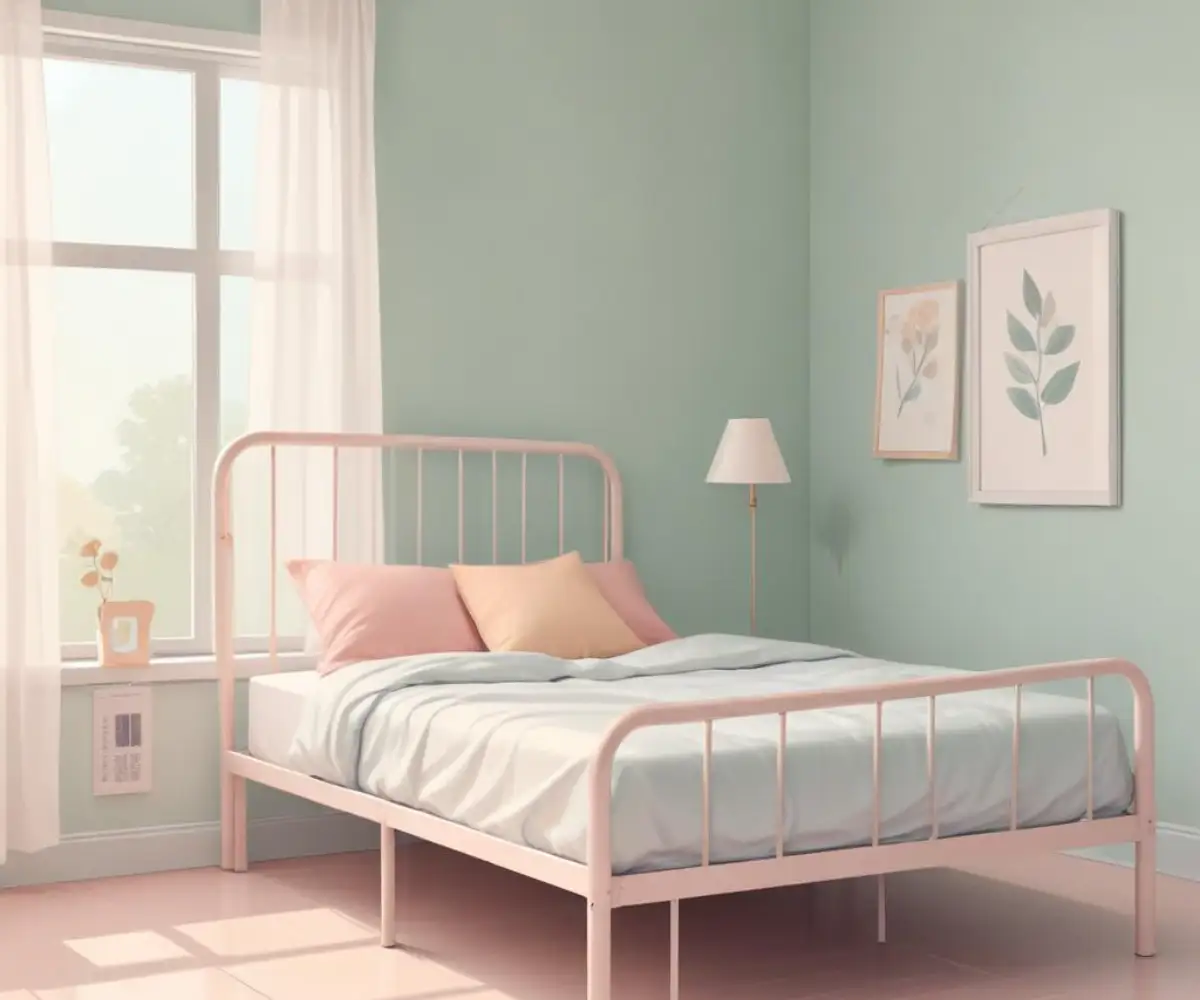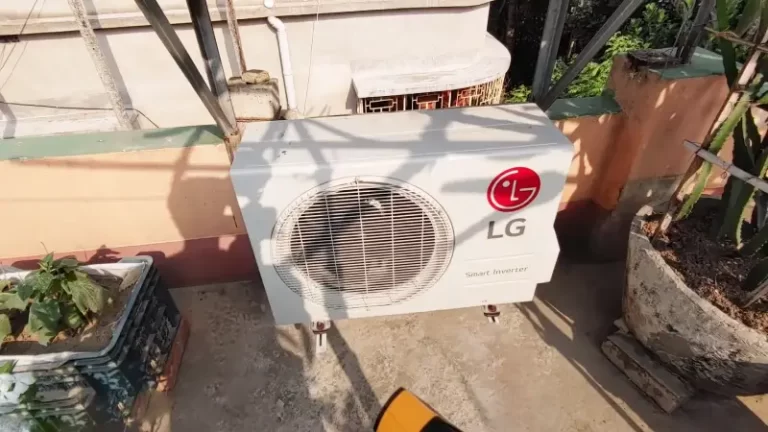Bed Over Air Vent: The Silent Mistake Damaging Your HVAC System
In the quest for the perfect bedroom layout, furniture placement often feels like a game of Tetris. This is especially true in smaller rooms where options are limited, and the ideal spot for the bed is directly over a floor air vent.
While it may seem like a harmless compromise, placing a bed directly over an HVAC vent can trigger a cascade of problems. These issues range from uncomfortable temperature swings to severe, long-term damage to your heating and cooling system.
This guide will illuminate the hidden risks of this common furniture arrangement. More importantly, it provides clear, actionable solutions to protect your home, your comfort, and your wallet.
You'll Learn About
Why Blocking an Air Vent Is a Bigger Deal Than You Think
An HVAC system is a closed loop, meticulously designed to circulate a specific volume of air to maintain balance. When a large object like a bed obstructs a supply vent, it disrupts this critical equilibrium, leading to significant consequences.
The Crushing Impact on Your HVAC System
Blocking a vent dramatically increases the static pressure within your ductwork. Think of it like pinching a garden hose; the pressure builds up behind the blockage, forcing your system’s blower motor to work much harder to push air through the remaining vents.
This constant strain leads to premature wear and tear on the motor and other vital components. In the summer, the restricted airflow can cause the evaporator coils in your air conditioner to get too cold and freeze over, potentially leading to a complete system breakdown. In winter, it can cause a furnace’s heat exchanger to overheat, a dangerous condition that can crack the exchanger and risk carbon monoxide leaks.
The Unseen Drain on Your Energy Bills
When your HVAC system has to fight against a blockage, it runs for much longer periods to achieve the temperature set on your thermostat. Your system is pumping out conditioned air that has nowhere to go, wasting the energy used to heat or cool it.
This inefficiency translates directly into higher monthly utility bills. You end up paying more for less comfort, as the blocked room remains stubbornly hot or cold while the rest of the house may feel fine.
Compromised Air Quality and Overall Comfort
Proper air circulation is key to maintaining a comfortable and healthy indoor environment. A blocked vent prevents air from mixing effectively, leading to noticeable hot and cold spots throughout the room.
Furthermore, the space under a bed is a natural trap for dust, pet dander, and other allergens. When a vent is located there, it can create a cycle of blowing these trapped particles directly up into your mattress and the air you breathe while sleeping.
The Hidden Dangers Lurking Under Your Bed
Beyond the mechanical and financial strain, ignoring a blocked vent can introduce more immediate risks to your health and property. The environment created under the bed can become a breeding ground for problems you cannot see.
Is a Blocked Air Vent a Fire Hazard?
This is a common and understandable concern. Fortunately, modern forced-air HVAC systems are built with safety features, like high-limit switches, that shut the system down if it overheats. This makes a fire directly from a blocked vent highly unlikely.
However, the risk is not zero, especially in older homes with outdated systems. Any situation that causes a system to malfunction increases overall risk. Ensuring proper airflow is a fundamental part of home safety, just as you would want a clear path to stop smoke from going upstairs during an emergency.
The Under-Discussed Threat of Mold and Mildew
One of the most significant and often overlooked dangers is the potential for mold growth. During summer, the cool air blowing from an air conditioning vent can cause condensation to form where it meets the warm, stagnant air trapped under the bed.
This creates a dark, damp, and undisturbed environment—the perfect breeding ground for mold and mildew. This growth can occur on your flooring, carpet pad, bed frame, and even the underside of your mattress, posing a serious health risk.

Long-Term Damage to Your Bed and Mattress
Your bed and mattress are significant investments that can be damaged by a poorly placed vent. The constant cycle of direct hot or cold air can degrade mattress materials like foam and adhesives, causing them to become brittle and break down prematurely.
For wooden bed frames, the persistent temperature fluctuations and potential for moisture can cause the wood to warp, weaken, or become discolored over time.
Smart Solutions: How to Safely Position a Bed Over a Vent
If moving your bed is simply not an option, do not despair. Several effective and affordable strategies can mitigate the risks and restore proper airflow, allowing your bed and vent to coexist peacefully.
The First and Most Critical Step: Elevate Your Bed
The number one priority is creating space. You must ensure there is adequate clearance between the floor and the bottom of your bed frame. A minimum of 6 inches is a good starting point, but more is always better.
Look for bed frames with tall legs or a design that is naturally high off the ground. If you love your current frame, a set of heavy-duty bed risers is an excellent and inexpensive solution to instantly create the necessary vertical space.
Master the Airflow: Air Deflectors and Vent Extenders
Once you have clearance, the next step is to guide the air out from under the bed. An air deflector is a simple, curved piece of plastic that fits over the vent register. Most are magnetic and attach instantly to steel vents.
These devices redirect the airflow horizontally, pushing it out into the open room instead of straight up into your box spring. For a more robust solution, consider a low-profile vent extender. This is a shallow duct that connects to your vent and channels the air to the edge of the bed, releasing it completely clear of the furniture.
Choosing the Right Solution for Your Setup
Different situations call for different tools. Understanding the pros and cons of each option can help you make the best choice for your bedroom and budget.
| Solution | Best For | Average Cost | Pros | Cons |
|---|---|---|---|---|
| Bed Risers | Low bed frames where vertical space is the main issue. | $15 – $30 | Inexpensive, easy to install, instantly effective. | Can be aesthetically displeasing to some, requires a sturdy frame. |
| High-Clearance Frame | New bed purchases or anyone wanting a permanent, integrated solution. | $150 – $500+ | Aesthetically pleasing, stable, provides maximum clearance. | More expensive, requires assembly. |
| Magnetic Air Deflector | Quickly redirecting airflow when there is already some clearance. | $10 – $20 | Very cheap, tool-free installation, adjustable. | Can be knocked off easily, may not be sufficient for very low beds. |
| Under-Furniture Vent Extender | Completely blocked vents or when maximum airflow redirection is needed. | $25 – $40 | Most effective at clearing the furniture, low profile. | Can be more visually obvious, may require trimming to fit. |
Advanced Strategies and Long-Term Prevention
Solving the immediate problem is great, but adopting a long-term strategy will ensure your HVAC system remains healthy and efficient for years to come. Thinking about the entire system is crucial for home health.
Consider a Professional HVAC Assessment
If your room still feels uncomfortable after trying these solutions, there may be a deeper issue at play. An HVAC professional can assess your entire system, check for ductwork imbalances, or even provide a quote for moving the vent—a permanent but more involved solution.
This kind of professional check-up is particularly wise in older homes, where the ductwork might not have been designed for modern living. Similar due diligence is needed when buying a house built in the 1800s, as their original systems are vastly different.
The Critical Importance of Regular Maintenance
A blocked vent puts extra strain on your air filter, causing it to clog with dust and debris more quickly. Commit to checking your furnace filter monthly and replacing it at least every 90 days. A clean filter is the easiest way to improve efficiency and air quality.
You should also make a habit of vacuuming the vent register and the area under your bed regularly. This prevents the accumulation of allergens that could otherwise be circulated into the room.
A Note on Supply vs. Return Vents
It’s vital to understand what kind of vent you are dealing with. Supply vents, the most common type found in bedrooms, blow conditioned air into the room. Return air vents are larger and suck air out of the room to send it back to the HVAC unit for re-conditioning.
Blocking a return air vent is often even more damaging than blocking a supply vent, as it can starve your entire system of air. The principle of maintaining clearance is universal; just as your indoor vents need space, your outdoor unit must be kept clear of obstructions, a key consideration when you plan to build a deck around an AC unit.
Your Bed and Vent Coexistence Checklist
Use this simple checklist to ensure your bedroom setup is safe, efficient, and comfortable. It provides a quick reference for maintaining a healthy balance between your furniture and your HVAC system.
Essential Airflow Health Check
Sufficient Clearance: Is there a minimum of six inches between the floor and the bottom of your bed frame or box spring? More space is always preferable for better air circulation.
Effective Redirection: Is the airflow successfully guided out from under the bed? Hold your hand at the edge of the bed to feel for air movement when the system is running.
Balanced Room Comfort: Is the room temperature now consistent with the rest of the house? The absence of significant hot or cold spots is a key indicator of success.
Regular Maintenance Routine: Are you checking your air filter and cleaning under the bed at least once a month? Consistency is crucial for long-term system health.
Conclusion: Reclaim Your Comfort and Protect Your Home
The seemingly minor decision of where to place your bed can have a major impact on your home’s most expensive and essential system. A blocked air vent is not a passive issue; it actively works against your HVAC unit, costing you money and compromising your comfort.
By understanding the risks and implementing simple, effective solutions like bed risers and air deflectors, you can solve the problem without a complete room makeover. You can create a comfortable bedroom, breathe cleaner air, and protect the long-term health of your HVAC system.

